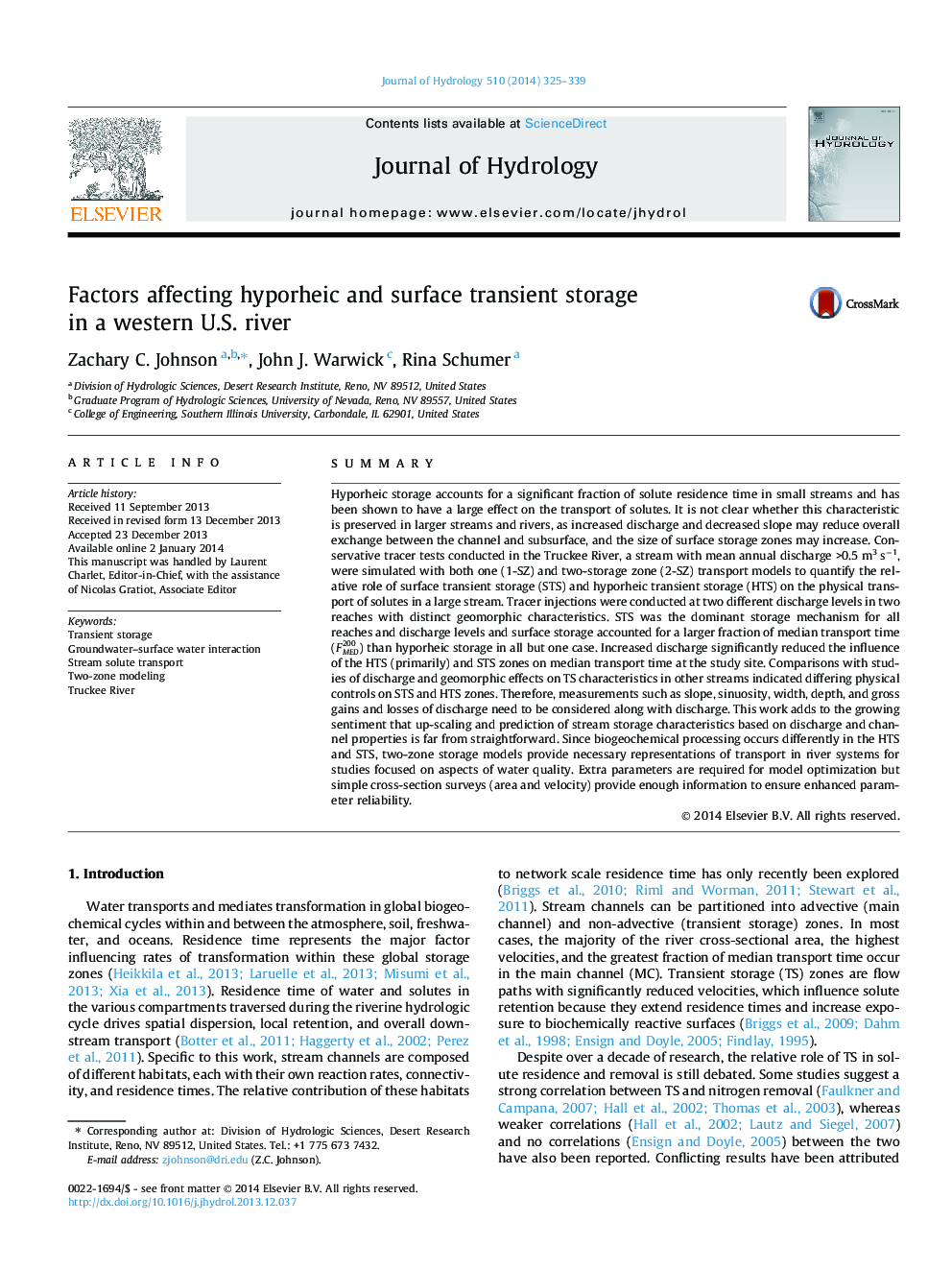| کد مقاله | کد نشریه | سال انتشار | مقاله انگلیسی | نسخه تمام متن |
|---|---|---|---|---|
| 6413213 | 1629938 | 2014 | 15 صفحه PDF | دانلود رایگان |
- One- and two-zone TS model results obtained for two discharge levels in a large stream.
- Exchange characteristics have wide variation along single reach lengths.
- Surface TS dominates over hyporheic TS in the Truckee River.
- Surface and hyporheic TS were disproportionately affected by discharge.
- Surface and hyporheic TS were influenced by different physical factors.
SummaryHyporheic storage accounts for a significant fraction of solute residence time in small streams and has been shown to have a large effect on the transport of solutes. It is not clear whether this characteristic is preserved in larger streams and rivers, as increased discharge and decreased slope may reduce overall exchange between the channel and subsurface, and the size of surface storage zones may increase. Conservative tracer tests conducted in the Truckee River, a stream with mean annual discharge >0.5Â m3Â sâ1, were simulated with both one (1-SZ) and two-storage zone (2-SZ) transport models to quantify the relative role of surface transient storage (STS) and hyporheic transient storage (HTS) on the physical transport of solutes in a large stream. Tracer injections were conducted at two different discharge levels in two reaches with distinct geomorphic characteristics. STS was the dominant storage mechanism for all reaches and discharge levels and surface storage accounted for a larger fraction of median transport time (FMED200) than hyporheic storage in all but one case. Increased discharge significantly reduced the influence of the HTS (primarily) and STS zones on median transport time at the study site. Comparisons with studies of discharge and geomorphic effects on TS characteristics in other streams indicated differing physical controls on STS and HTS zones. Therefore, measurements such as slope, sinuosity, width, depth, and gross gains and losses of discharge need to be considered along with discharge. This work adds to the growing sentiment that up-scaling and prediction of stream storage characteristics based on discharge and channel properties is far from straightforward. Since biogeochemical processing occurs differently in the HTS and STS, two-zone storage models provide necessary representations of transport in river systems for studies focused on aspects of water quality. Extra parameters are required for model optimization but simple cross-section surveys (area and velocity) provide enough information to ensure enhanced parameter reliability.
Journal: Journal of Hydrology - Volume 510, 14 March 2014, Pages 325-339
